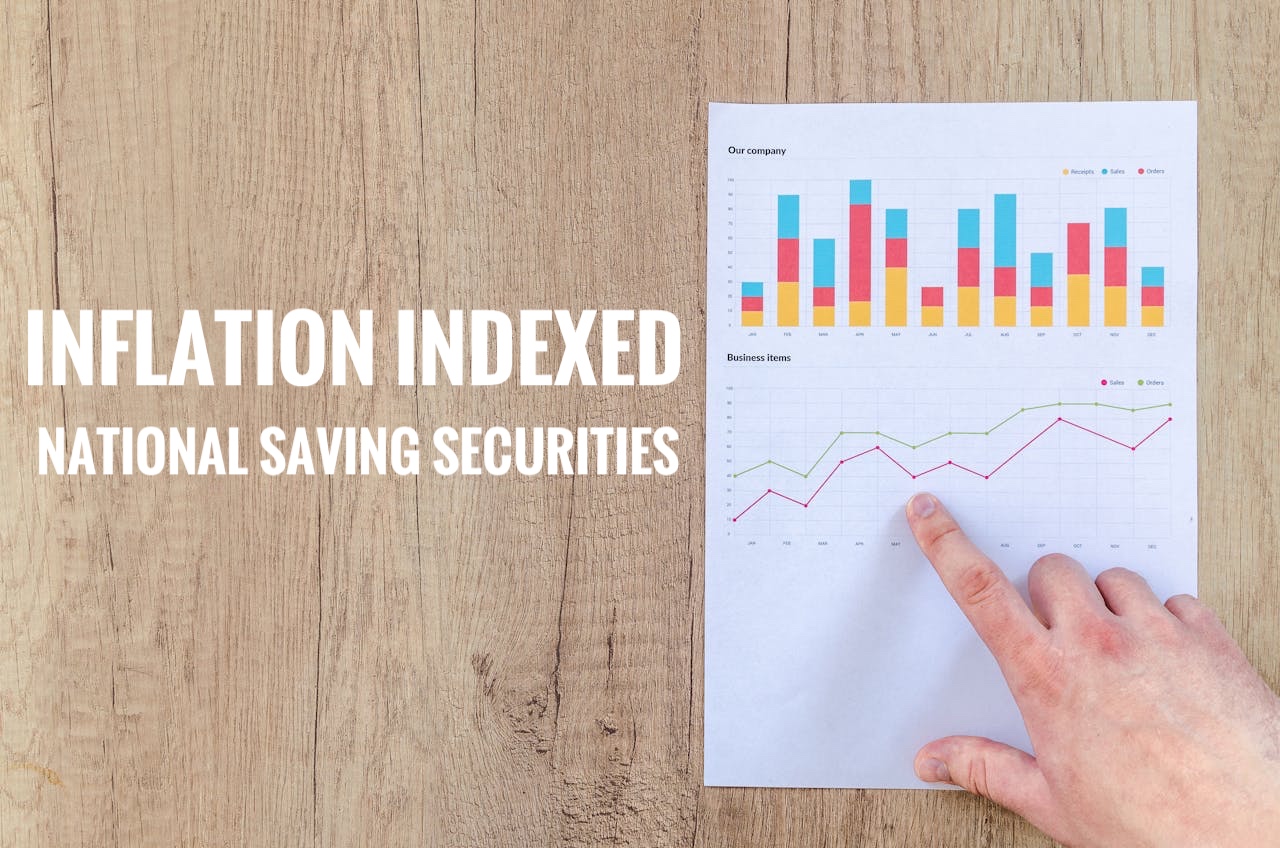Introduction
Just like stocks, mutual funds, bonds, and commodity investments, investors also use a class of debt investment called Inflation Indexed National Saving Securities (IINSS).
In this blog, let us know more about these type of securities and how can it benefit the investors. But, before we move forward, let’s spare two minutes to refresh our minds on Inflation and Inflation Index.
What is Inflation
Inflation is defined as the rise in the value of goods and services over a period of time. Inflation causes reduction in the purchasing power of money.
As the value of goods increases over time, the power of the money is reduced.
Consider for example, the price of 1 kg of sugar was Rs. 20 in 2015. In the year 2020, the price of the same 1 kg of sugar is now Rs. 100. The commodity is the same “1 kg sugar”, but the price moved from Rs. 20 to Rs. 100 in a span of 5 years. That’s inflation.
What you used to get for Rs. 20 in 2020 is far less that what you got in 2015 for the same price. Thus, we can conclude that, inflation reduces the purchasing power of money.
What is Inflation Index
In order to periodically track the rise in the value of commodities over a period of time, we need a benchmark. Thus, Inflation Index works like a mechanism to track this rise in the value of commodities over a period of time.
There are majorly two types of Inflation Index
- Consumer Price Index (CPI)
- Wholesale Price Index (WPI)
The price of the commodities is ultimately determined by the market (MXC Commodities Market). The price of gold may increase by 4% on a particular year, whereas the price of copper may increase by just 1%.
They call a collection of these commodities an Inflation Index.And with respect to the basket of such commodities, analysts sub-divide the inflation index into Consumer Price Index and Wholesale Price Index.
For example, the Consumer Price Index has increased by 6.5% from the previous year means that, on a average (considering all the commodities under the basket) the prices of goods have increased by 6.5%.
You might also like: How Does Inflation Affect The Mind Set Of Long-Term Investor
What are Inflation Indexed National Saving Securities (IINSS)
Consider for example, if you placed Rs. 20 under your mattress in 2015 and decide to remove it in 2020, what will happen? Your money under the mattress will lose its purchasing power.
As that same Rs. 20 which gave you 1 kg sugar in 2015 is now giving you 0.2 kg sugar in 2020.
Now what if I tell you, what if you place that same Rs. 20 into a magic box, and this magic box ensures that the value of the Rs. 20 will increase in such a way that it will get adjusted to inflation and you will be able to purchase the same unit of commodity in the future.
Rs. 20 placed in the magic box in 2015 will automatically turn to Rs. 100 in 2020, to enable you to buy the same 1 kg of sugar.
This magic box is called Inflation Indexed National Saving Securities (IINSS).
Thus, putting it in technical terms, the Government backs Inflation Indexed National Saving Securities (IINSS) are investment schemes designed to protect investors from inflation.
The returns provided by these securities are directly linked to the inflation index, such as the CPI or the WPI, so that the real value of the investment are remained protected.
Benefits of investing in Inflation Indexed National Saving Securities (IINSS)
The following are the major benefits of investing in IINSS:
- Protection from inflation
- Securities are backed by Government (RBI)
- A good source for long term investment
Calculating Interest Rates on Inflation Indexed National Saving Securities (IINSS)
The interest rates provided by IINSS are divided into 2 components:
- Fixed Rate
- Inflation Rate
The fixed rate is the fixed return on investment provided on your investment. On the other hand, the Inflation Rate is a variable interest rate which will ultimately depend on the rate of inflation in the particular year.
For example, the if the Fixed Rate for an IINSS is 1.5% and the inflation for that year was 6.5%, the rate of return yielded for the IINSS will be 8% (1.5% + 6.5%).
It is noteworthy to note that, the Fixed Rate also serves as the minimum rate of return that will yield results, even if there is a year of negative inflation (deflation). For example, if the inflation for the year is -6.5%, the rate of return will still be +1.5% (as per fixed rate), and not -5% (which is -6.5% + 1.5%).
They will pay the interest along with the principal after accruing and compounding it on a half-yearly basis
How to invest in Inflation Indexed National Saving Securities (IINSS)
According to the rules prescribed by the Reserve Bank of India (RBI), investors can only invest IINSS with the help of banks as mediators or the Stock Holding Corporation of India (SHCIL) and cannot purchase, transfer, or sell it online.
After filling the physical form and transferring the funds, the bank will create the Certificate of Holding and register the investor on the RBI’s online platform called E-Kuber.
For individual investors, the maximum investment amount is Rs. 10 Lakh, while for institutional investors, it can reach Rs. 25 Lakh. The minimum investment amount is Rs. 5,000/-.
Read my article on How To Invest In Inflation Indexed National Saving Securities to get a thorough understanding on how to start your investment in such securities.
Conclusion
Inflation is a rate which cannot be predicted. Thus, during the times of instability and rapid rise of inflation, could reduce the purchasing power of money drastically. Thus, Inflation Indexed National Saving Securities (IINSS) reduce the risk of the investors from these high / irregularities in the rate of inflation.

